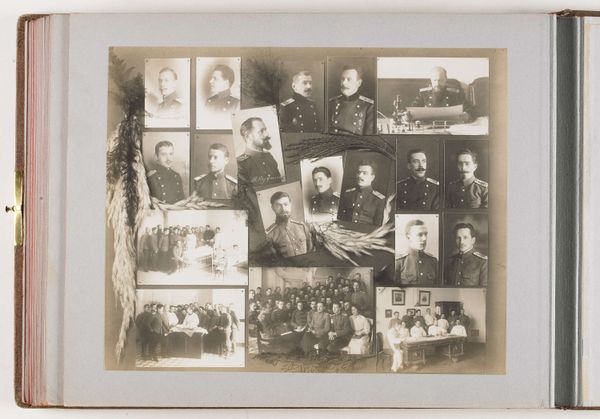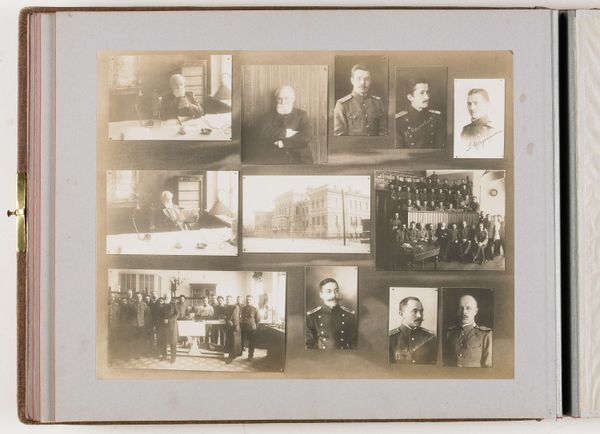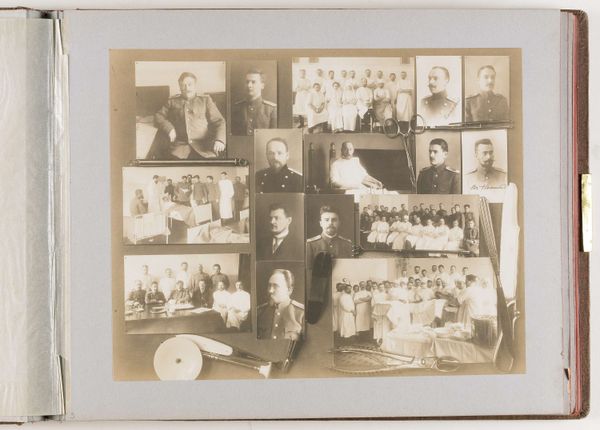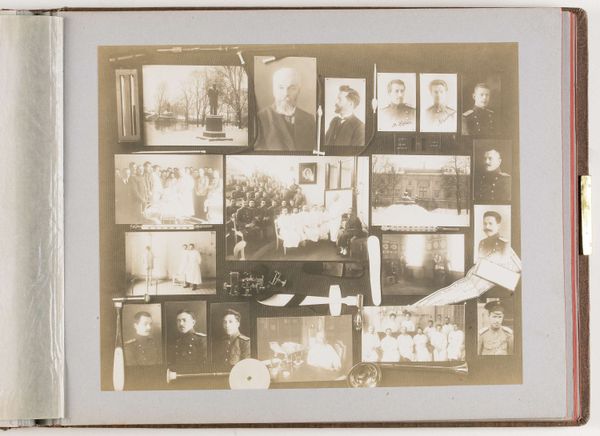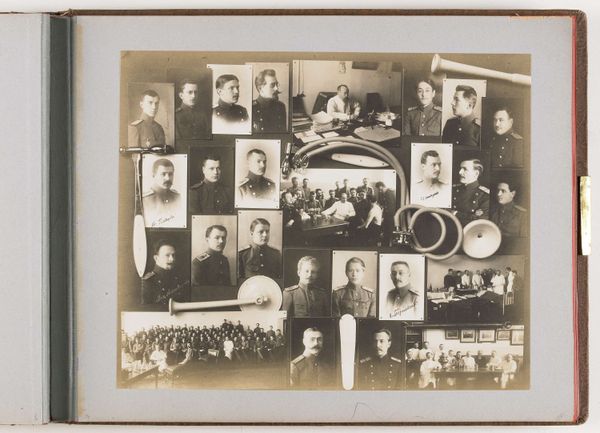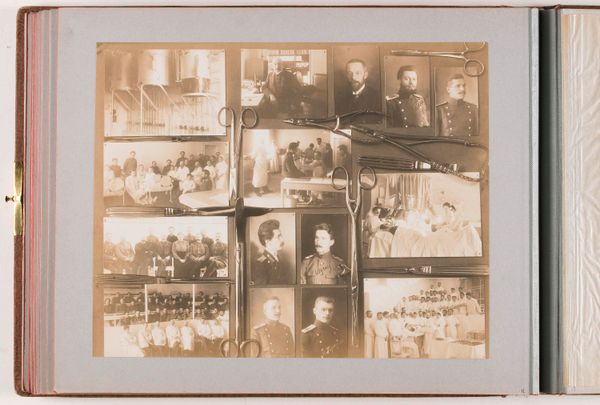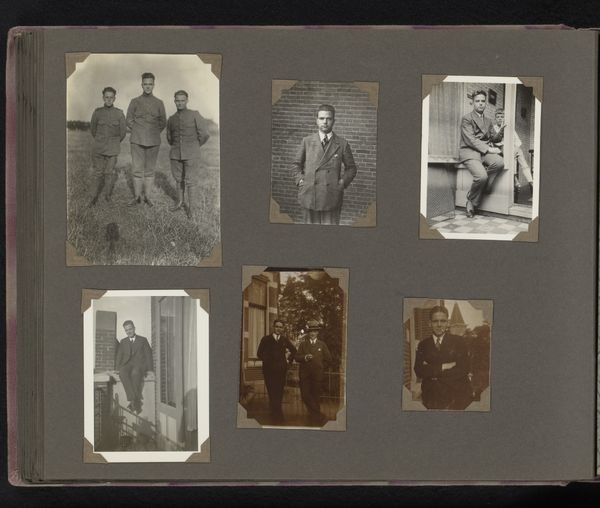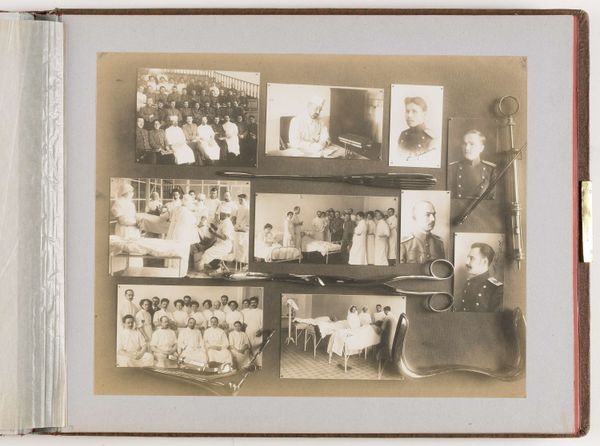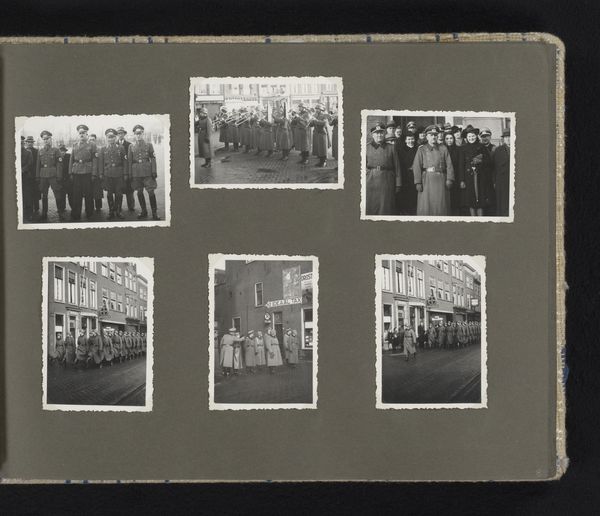
Compositie van twaalf foto's van personen en onderwijs aan de Keizerlijke Militair-Medische Academie, gecombineerd met decoratie van gedroogde takken 1913
0:00
0:00
photography
#
portrait
#
photography
#
group-portraits
#
russian-avant-garde
#
academic-art
Dimensions: height 232 mm, width 287 mm
Copyright: Rijks Museum: Open Domain
Editor: This is V. Sabel'skij's "Composition of twelve photos of persons and education at the Imperial Military Medical Academy, combined with a decoration of dried branches," created in 1913, using photography. It feels like looking into a bygone era, presented with this grid layout and decorative elements. What catches your eye when you look at it? Curator: The inherent tension between the rigid structure of the photographic grid and the organic, almost chaotic, placement of the dried branches presents a fascinating dichotomy. Consider the stark contrast in textures and forms—the smooth surfaces of the photographs against the rough, brittle feel one imagines when looking at the branches. Editor: So it's more about the visual relationships than the subjects? Curator: Precisely. Disregarding, for the moment, the historical or contextual narratives these photographs might imply, examine how Sabel'skij arranges these disparate elements. Note the strategic placement of the darker, denser clusters of branches around the lighter photographic squares. How does that interplay affect the overall composition, the flow of your eye across the surface? Editor: I see what you mean, it does frame certain images. Do you think that influences how we interpret those specific photos? Curator: Potentially, yet, I posit the composition itself, the arrangement of form and texture, stands alone as the primary mode of signification here. Do the branches serve a symbolic function, perhaps referencing mortality, given their withered state? Or, is their inclusion purely an aesthetic choice to disrupt the otherwise severe linearity of the piece? It seems a structural foil more than a symbolic key. Editor: That's a totally different way of seeing it! I was so caught up in trying to understand what the images represented, I hadn't focused on their formal relationship with the branches. Curator: Art often functions on multiple levels. Dissecting its components, as we've done here, reveals its internal logic, allowing for a richer appreciation of its aesthetic qualities. Editor: Thanks for highlighting that approach; it offers a new layer of understanding I can certainly take into my future study.
Comments
No comments
Be the first to comment and join the conversation on the ultimate creative platform.
